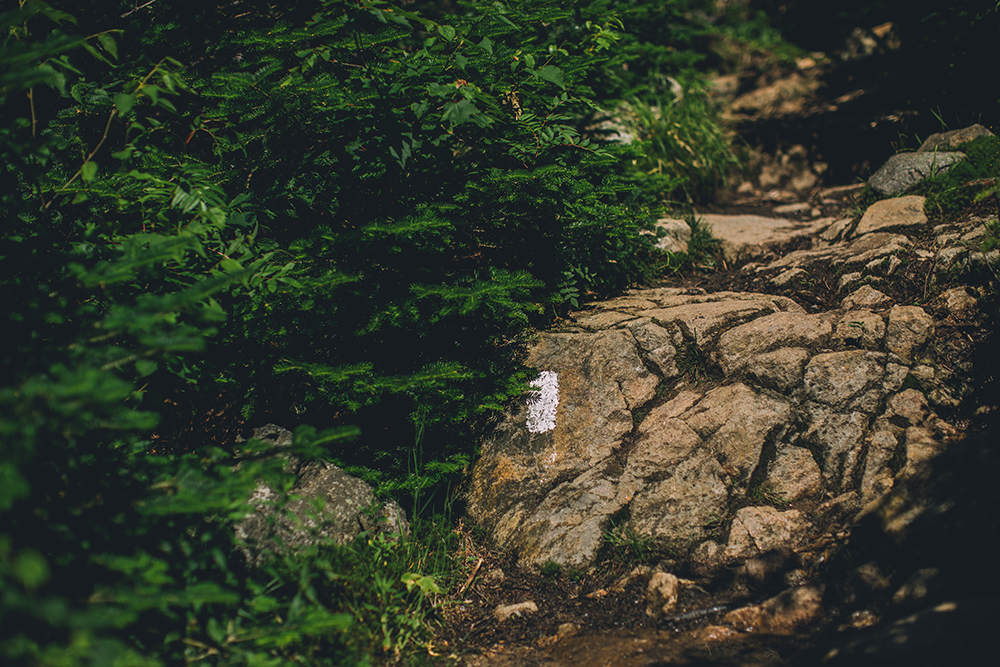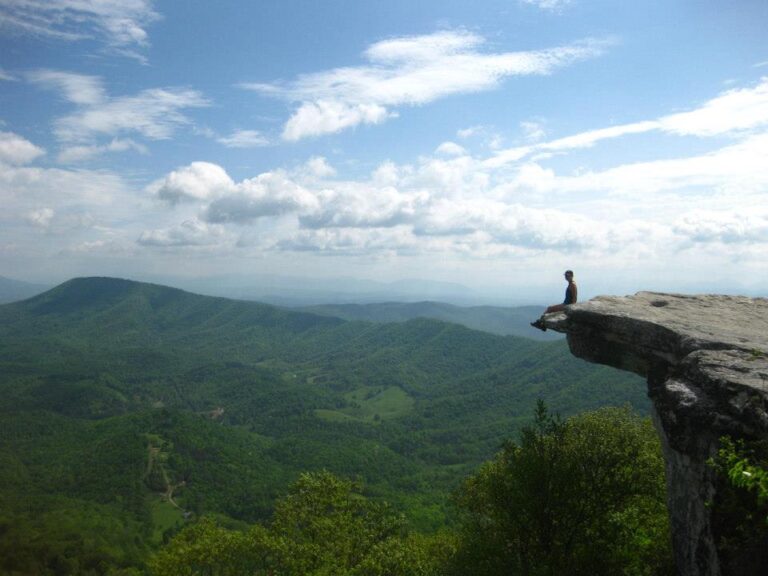
The Appalachian Trail where it passes through New Hampshire’s White Mountain National Forest. While she hiked up to 37 miles a day along the 2,200-mile trail, the author was also facing an even more formidable challenge: her own battle with anorexia nervosa.
This article contains sensitive content about Anorexia Nervosa and body dysmorphia that may be triggering for some. Please proceed with caution. And don’t hesitate to contact the National Eating Disorder Association during a crisis by calling (800) 931-2237 or texting “NEDA” to 741741.
Early one morning in 2014, the scale flashed a number in blue light: 125 pounds. I knew I was underweight, and I liked it. My 5-foot-7 frame was stringy. My hips protruded from their sockets, and it hurt to sit on hard surfaces. But people were noticing me. At the office, my coworkers told me how great I looked, stunned by the weight loss they’d witnessed over the past few months. I was turning heads for the first time in my life.
“I wish I could drop ten pounds before summertime,” one of my coworkers told me after seeing my deterioration, detailing ways she hoped to shrink herself.
Despite their encouraging comments, something was stirring inside of me. I knew I couldn’t keep doing what I was doing. I was nursing an ache in my chest. I couldn’t live like this anymore, allowing an employer to shape my life. I was spending the majority of my time in a cubicle, feeling my spine contort to the desk chair each day. Between emails, I wondered if I’d reached “success”—the shiny American Dream that we’d read about in history books. Everyone told me how much progress they’d seen me make at work in just two years. I was conducting negotiations, confidently dueling in the white-collar Wild West, purchasing raw materials that were waiting to be molded into car parts and useful plastic items. But I was miserable. Yet, I knew that staying would be more dangerous than leaving.
I’d read about the Appalachian Trail (A.T.). A short passage in The Last American Man, Elizabeth Gilbert’s biography of Appalachian Mountain survivalist Eustace Conway, alluded to it, saying that thru-hiking changes your body chemistry. I wondered if the artificial lights in my cubicle were changing my body chemistry, too.
I couldn’t stop thinking about the 2,200-mile hiking trail from Georgia to Maine along the oldest mountain range in America, a route first conceived in 1921—a century ago this year. I wasn’t an outdoor enthusiast or a survivalist by a long shot. I’d never even been on a backpacking trip before. But I knew that change begets change. And I needed a big one.
Undertaking a challenge of this magnitude seemed insane for a number of reasons. Besides the risks the mountains could present to a non-backpacker like myself, I was also malnourished and intending to carry a 45-pound backpack for thousands of miles. I could end up with stress fractures, heart problems, or worse. But in my mind, if I didn’t manage to pull myself out of my hometown, it was just a matter of time before I’d die. The Appalachian Trail seemed like the smaller risk.
Still, I cried the day my best friend dropped me off with a backpack in the woods in Georgia. I wept out of fear and frustration. The brambles chewed up my legs after I hiked four miles in the wrong direction. I didn’t know how to properly set up my hammock. And I was completely alone for the first time in my life. I fell asleep on my first night on the Appalachian Trail with a face sticky from tears, wondering if I’d made a terrible mistake.
The next day I ran into two hikers from Wisconsin. Their jovial attitudes brought me comfort, and I caught their momentum like it was a jet stream. I charged forward, learning from their perseverance. Together, we slowly trudged up the undulating Georgia peaks. Maybe I could do this after all.
A group of hikers I ran into a few days later quickly became my “trail family.” They provided laughter and lightheartedness despite the threatening rain. We talked about our reasons for hiking the Appalachian Trail. One man was a retired Marine; thru-hiking the A.T. was a way of deploying himself now that the government couldn’t. Another was a bartender who’d recently lost a friend to suicide. I’d lost myself to heartbreak. But I didn’t feel alone anymore.

The author takes in the view from McAfee Knob in Jefferson National Forest in Virginia on her Appalachian Trail thru-hike.
The days passed in a flurry of excitement. First, I was hiking 10 miles per day. By the time I hit Virginia, I had hiked my first marathon day—surpassing 26.2 miles. And eventually, I even added a 37-mile day to my list of accolades.
But something else—something much more important than hiking mileage—was happening in my mind, and in my stomach.
As the miles passed, I became hungry.
I hadn’t eaten a full meal in over two years. But, suddenly, I had the desire to eat several of them all at once. I wanted to shovel each menu item onto my plate, allowing myself to grow stronger. But I was also hungry for life. I wanted to explore the country intimately, tasting the foraged wild ramps and talking to strangers as I went. I wanted to fill my cup with silly moments, collected between thunderstorms along the trail. I wanted to be myself, no matter who the world told me to be. And, somehow, those arbitrary numbers, the miles, the humans, and those plates full of food turned me into the type of person who was built to persevere.
I finished the Appalachian Trail four-and-a-half months after my journey began. My relationship with food is still strained, but now I see it as the nourishment that allows me to climb mountain summits. So, I eat. There’s magic in the forests, and healing. And I return to the mountains with more regularity, knowing that they bring me back to life.